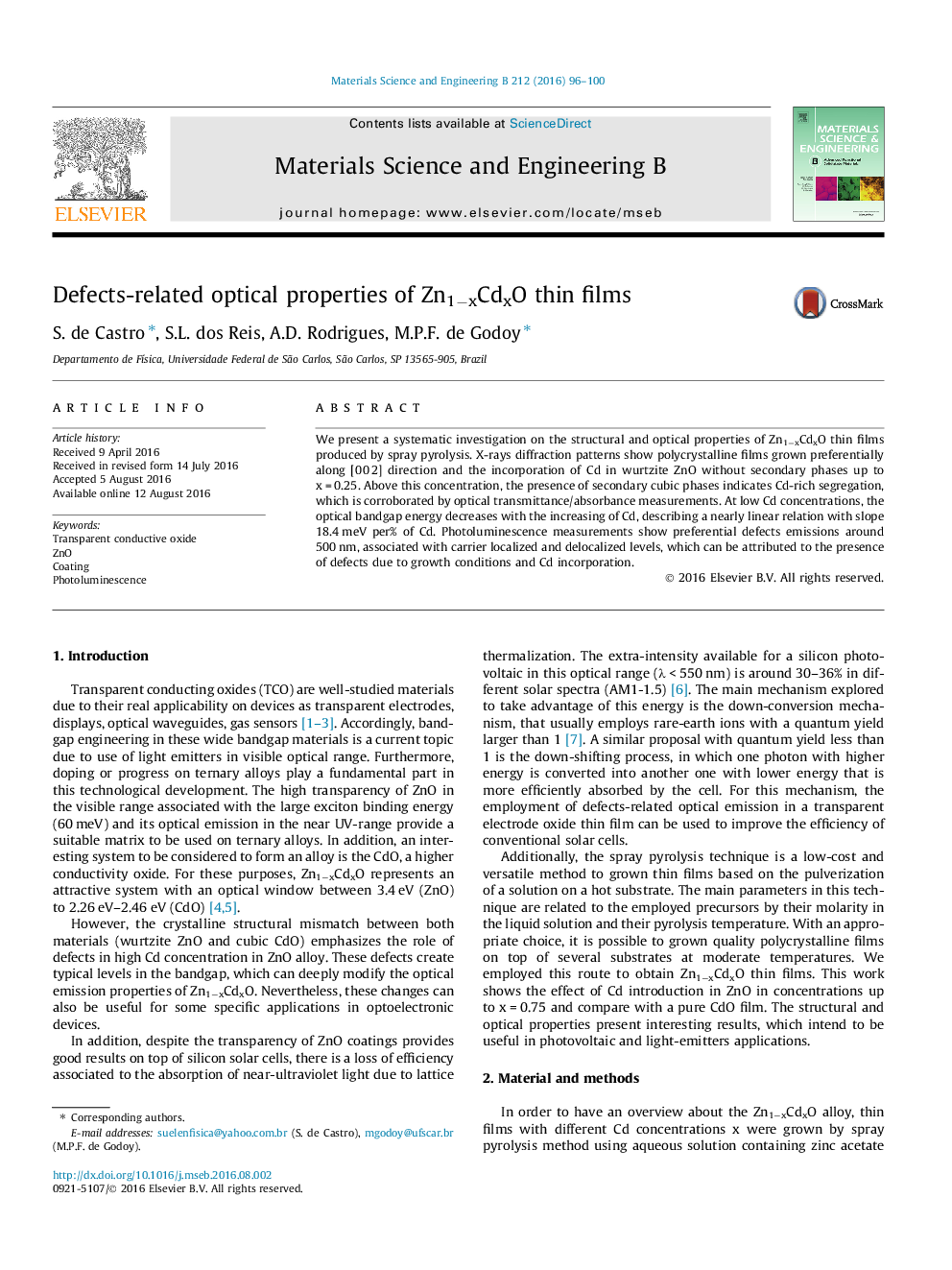| Article ID | Journal | Published Year | Pages | File Type |
|---|---|---|---|---|
| 1528397 | Materials Science and Engineering: B | 2016 | 5 Pages |
•ZnCdO thin films were grown by spray pyrolysis technique.•Polycrystalline films grown preferentially along [0 0 2] direction without secondary Cd-phases up to 25%.•Up to 25% the bandgap decreases linearly by 18.4 meV per Cd-percentage.•Optical emissions are dominated by defects around 500 nm.•The defects-related emissions are suggested as a down-shifting mechanism.
We present a systematic investigation on the structural and optical properties of Zn1−xCdxO thin films produced by spray pyrolysis. X-rays diffraction patterns show polycrystalline films grown preferentially along [0 0 2] direction and the incorporation of Cd in wurtzite ZnO without secondary phases up to x = 0.25. Above this concentration, the presence of secondary cubic phases indicates Cd-rich segregation, which is corroborated by optical transmittance/absorbance measurements. At low Cd concentrations, the optical bandgap energy decreases with the increasing of Cd, describing a nearly linear relation with slope 18.4 meV per% of Cd. Photoluminescence measurements show preferential defects emissions around 500 nm, associated with carrier localized and delocalized levels, which can be attributed to the presence of defects due to growth conditions and Cd incorporation.
Graphical abstractFigure optionsDownload full-size imageDownload as PowerPoint slide
